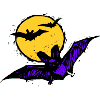Wildlife Disease and Zoonotics

Zoonotics and Wildlife Disease: Publications
Document Type
Article
Date of this Version
April 2007
Abstract
Background: With the objective of identifying spatial and temporal patterns of enzootic raccoon variant rabies, a spatial scan statistic was utilized to search for significant terrestrial rabies clusters by year in New York State in 1997–2003. Cluster analyses were unadjusted for other factors, adjusted for covariates, and adjusted for covariates and large scale geographic variation (LSGV). Adjustments were intended to identify the unusual aggregations of cases given the expected distribution based on the observed locations. Results: Statistically significant clusters were identified particularly in the Albany, Finger Lakes, and South Hudson areas. The clusters were generally persistent in the Albany area, but demonstrated cyclical changes in rabies activity every few years in the other areas. Cluster adjustments allowed the discussion of possible causes for the high risk raccoon rabies areas identified. Conclusion: This study analyzed raccoon variant rabies spatial and temporal patterns in New York that have not been previously described at a focal (census tract) level. Comparisons across the type of spatial analysis performed with various degrees of adjustment allow consideration of the potential influence of geographical factors for raccoon rabies and possible reasons for the highest risk areas (statistically significant clusters).


Comments
International Journal of Health Geographics 2007, 6:14. This article is available from: http://www.ij-healthgeographics.com/content/6/1/14 © 2007 Recuenco et al; licensee BioMed Central Ltd. Permission to use.